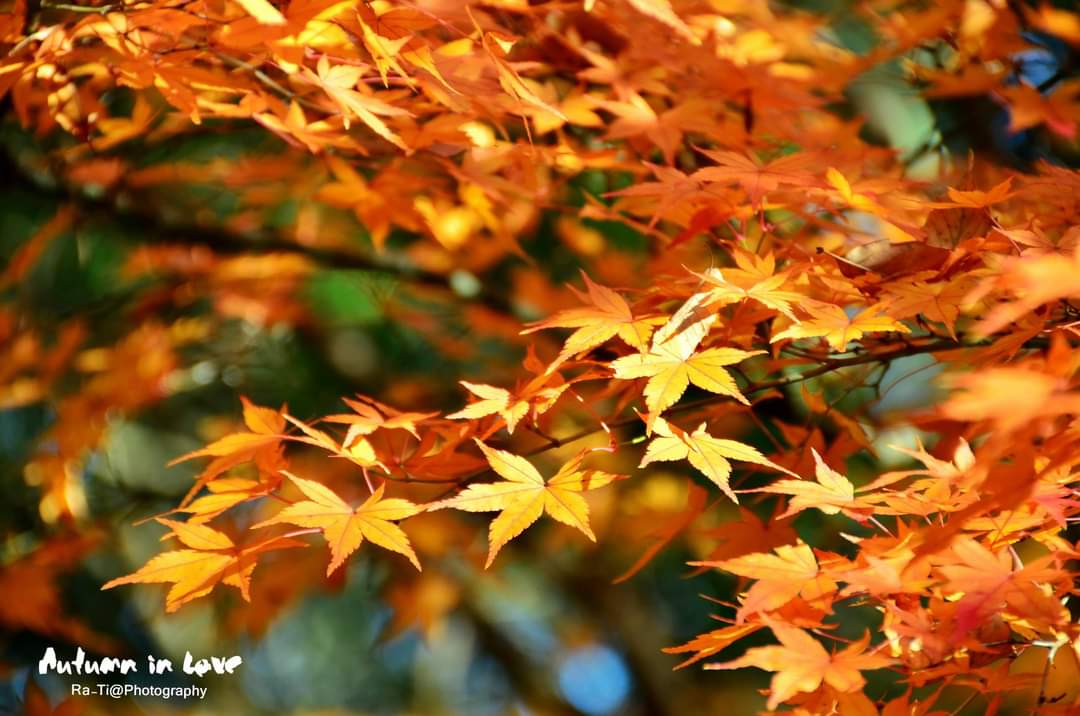🩷 รวมข่าวจากเวบ SecurityOnline 🩷
#รวมข่าวIT #20251125 #securityonline
จีน-นexus Autumn Dragon ใช้ช่องโหว่ WinRAR ปล่อยมัลแวร์ผ่าน Telegram
เรื่องนี้เป็นการเปิดโปงปฏิบัติการจารกรรมไซเบอร์ชื่อ “Autumn Dragon” ที่เชื่อมโยงกับกลุ่มแฮกเกอร์ฝั่งจีน พวกเขาใช้ไฟล์ RAR ที่ฝังช่องโหว่ของ WinRAR (CVE-2025-8088) ส่งไปยังเป้าหมายผ่านอีเมลหลอกลวง เมื่อเหยื่อเปิดไฟล์ ระบบจะถูกฝังสคริปต์ที่ทำงานต่อเนื่องเพื่อดึงมัลแวร์ขั้นต่อไปจาก Dropbox และซ่อนตัวผ่าน DLL sideloading โดยมีการควบคุมผ่าน Telegram ตัวมัลแวร์นี้สามารถสั่งงานได้ เช่น เปิด shell, ถ่าย screenshot และอัปโหลดไฟล์ จุดที่น่าสนใจคือการออกแบบให้ฟังก์ชันน้อยเพื่อไม่ให้ถูกตรวจจับง่าย เป้าหมายหลักคือหน่วยงานรัฐบาลและสื่อในภูมิภาคเอเชียตะวันออกเฉียงใต้
https://securityonline.info/china-nexus-autumn-dragon-apt-exploits-winrar-flaw-to-deploy-telegram-c2-backdoor
Notepad เพิ่มฟีเจอร์ Markdown Table และ Copilot Streaming
จากเดิมที่ Notepad เป็นเพียงโปรแกรมจดข้อความธรรมดา ตอนนี้ Microsoft ได้ยกระดับให้รองรับการสร้างตารางในรูปแบบ Markdown ผู้ใช้สามารถเลือกจำนวนแถวคอลัมน์ได้ง่าย ๆ คล้ายกับการใส่ตารางใน Word และยังสามารถแก้ไขขยายหรือลดขนาดได้สะดวก นอกจากนี้ยังมีการปรับปรุงการทำงานร่วมกับ Microsoft Copilot โดยเพิ่มความสามารถในการเขียนใหม่และสรุปข้อความแบบ “streaming” คือผลลัพธ์จะปรากฏทันทีโดยไม่ต้องรอจนเสร็จทั้งหมด ฟีเจอร์นี้ทำให้ Notepad กลายเป็นเครื่องมือที่ทันสมัยและตอบโจทย์นักพัฒนาและผู้ใช้ทั่วไปมากขึ้น
https://securityonline.info/notepad-update-adds-markdown-table-support-streaming-copilot-ai-responses
Microsoft แก้ปัญหา File Explorer ช้าใน Windows 11 ด้วย Preloading
ผู้ใช้ Windows 11 หลายคนบ่นว่า File Explorer เปิดช้า โดยเฉพาะเมื่อโหลดโฟลเดอร์ที่มีรูปภาพเยอะ ๆ Microsoft จึงออกฟีเจอร์ใหม่ใน Build 26220.7271 ที่เรียกว่า “preloading” ซึ่งจะโหลด Explorer เข้าหน่วยความจำล่วงหน้า ทำให้การเปิดใช้งานเร็วขึ้น แม้จะยังไม่แก้ปัญหาการหน่วงหลังเปิดไฟล์ได้ทั้งหมด แต่ก็ช่วยลดเวลารอไปหลายร้อยมิลลิวินาที ผู้ใช้สามารถปิดฟีเจอร์นี้ได้หากไม่ต้องการ แต่โดยทั่วไปมันใช้ RAM น้อยและช่วยให้ประสบการณ์ใช้งานดีขึ้นมาก
https://securityonline.info/microsoft-tries-to-fix-windows-11-file-explorer-lag-with-new-preloading-feature
Qualcomm ยืนยัน Quick Share ใช้งานร่วมกับ AirDrop ได้บนมือถือ Snapdragon
หลังจาก Google ประกาศว่า Pixel 10 จะสามารถส่งไฟล์ผ่าน Quick Share ไปยัง iPhone ได้เหมือน AirDrop ล่าสุด Qualcomm ก็ออกมายืนยันว่า ฟีเจอร์นี้จะไม่จำกัดเฉพาะ Pixel แต่จะขยายไปยังมือถือ Android ที่ใช้ชิป Snapdragon ด้วย หมายความว่าผู้ใช้ Android และ iOS จะสามารถแชร์ไฟล์กันได้ง่ายขึ้นโดยไม่ต้องพึ่งแอปเสริม ถือเป็นการเชื่อมโลกสองฝั่งที่เคยถูกแบ่งแยกมานาน คาดว่า Samsung Galaxy S26 จะเป็นรุ่นแรก ๆ ที่นำมาใช้ และนี่อาจเป็นจุดเปลี่ยนสำคัญของการแชร์ไฟล์ข้ามระบบนิเวศ
https://securityonline.info/qualcomm-confirms-quick-share-airdrop-interoperability-coming-to-all-snapdragon-phones
ทีมไซเบอร์ระดับโลกเปิดตัว Blast Security ด้วยทุน $10M
Blast Security คือสตาร์ทอัพใหม่จาก Tel Aviv ที่ก่อตั้งโดยทีมผู้เชี่ยวชาญไซเบอร์จาก Solebit และหน่วย IDF พวกเขาเปิดตัวแพลตฟอร์ม “Preemptive Cloud Defense” ที่เน้นการป้องกันเชิงรุกแทนการตรวจจับและแก้ไขทีหลัง จุดเด่นคือการสร้างระบบป้องกันที่ทำงานต่อเนื่อง ปรับตัวตามการเปลี่ยนแปลงของคลาวด์ และลดความเสี่ยงได้กว่า 90% การลงทุนรอบ seed ได้เงินทุนถึง 10 ล้านดอลลาร์จาก 10D และ MizMaa Ventures เป้าหมายคือการทำให้ “การป้องกัน” กลายเป็นมาตรฐานใหม่ของความปลอดภัยบนคลาวด์
https://securityonline.info/elite-cyber-veterans-launch-blast-security-with-10m-to-turn-cloud-detection-into-prevention
CISA เตือนภัยสปายแวร์เชิงพาณิชย์โจมตีแอปแชทด้วย Zero-Click และ QR Code อันตราย
หน่วยงาน CISA ของสหรัฐฯ ออกประกาศเตือนเร่งด่วนว่ามีการใช้สปายแวร์เชิงพาณิชย์โจมตีผู้ใช้งานแอปแชทยอดนิยม เช่น WhatsApp และ Signal โดยไม่ต้องให้เหยื่อกดหรือทำอะไรเลย ผ่านช่องโหว่แบบ Zero-Click และการหลอกให้สแกน QR Code ที่เชื่อมบัญชีไปยังเครื่องของแฮกเกอร์ เมื่อถูกเจาะแล้ว ผู้โจมตีสามารถอ่านข้อความ รายชื่อผู้ติดต่อ เปิดไมโครโฟน และติดตามตำแหน่งได้ทันที เป้าหมายหลักคือบุคคลสำคัญ นักข่าว และองค์กรภาคประชาสังคมในหลายภูมิภาคทั่วโลก
https://securityonline.info/cisa-emergency-alert-commercial-spyware-exploiting-zero-click-and-malicious-qr-codes-to-hijack-messaging-apps
ช่องโหว่ร้ายแรง WordPress (CVE-2025-6389)
เปิดทางให้แฮกเกอร์เข้าควบคุมเว็บได้ทันที มีการเปิดเผยช่องโหว่ระดับวิกฤติในปลั๊กอิน Sneeit Framework ที่ใช้ในธีมยอดนิยมอย่าง FlatNews ช่องโหว่นี้เปิดโอกาสให้ผู้โจมตีสามารถรันโค้ดบนเซิร์ฟเวอร์ได้โดยไม่ต้องล็อกอิน ทำให้สามารถสร้างบัญชีแอดมินปลอม อัปโหลดเว็บเชลล์ และยึดครองเว็บไซต์ได้ทันที นักวิจัยพบว่ามีการโจมตีจริงแล้วหลายร้อยครั้งในเวลาเพียงวันเดียว ผู้พัฒนาได้ออกเวอร์ชันใหม่เพื่อแก้ไข แต่ใครที่ยังไม่อัปเดตถือว่าเสี่ยงสูงมาก
https://securityonline.info/critical-wordpress-flaw-cve-2025-6389-cvss-9-8-under-active-exploitation-allows-unauthenticated-rce
ช่องโหว่กล้อง Vivotek รุ่นเก่า เปิดช่องให้สั่งรันคำสั่งได้โดยไม่ต้องล็อกอิน
ทีมวิจัยจาก Akamai พบช่องโหว่ที่ยังไม่ได้รับการแก้ไขในกล้อง IP ของ Vivotek รุ่นที่หมดอายุการสนับสนุนแล้ว ช่องโหว่นี้อยู่ในไฟล์ eventtask.cgi ซึ่งเปิดให้ผู้โจมตีส่งคำสั่งไปยังระบบโดยตรงโดยไม่ต้องมีรหัสผ่าน ทำให้สามารถเข้าควบคุมกล้องได้เต็มรูปแบบ ปัญหาคือเฟิร์มแวร์รุ่นที่มีช่องโหว่นี้ถูกยกเลิกไปแล้ว จึงไม่มีแพตช์แก้ไข ผู้ใช้งานจึงถูกแนะนำให้รีบแยกอุปกรณ์ออกจากเครือข่ายหรือเปลี่ยนไปใช้รุ่นใหม่แทน
https://securityonline.info/critical-unpatched-flaw-vivotek-eol-ip-cameras-exposed-to-unauthenticated-rce-via-command-injection
CVE-2025-63207: ช่องโหว่ยึดระบบออกอากาศ R.V.R Elettronica TEX ได้ทั้งหมด
นักวิจัยเปิดเผยช่องโหว่ร้ายแรงในอุปกรณ์ออกอากาศ TEX ของ R.V.R Elettronica ที่ทำให้ผู้โจมตีสามารถรีเซ็ตรหัสผ่านของผู้ใช้ทุกระดับ รวมถึงแอดมิน ได้ด้วยคำสั่ง HTTP เพียงครั้งเดียวโดยไม่ต้องล็อกอิน เมื่อรีเซ็ตรหัสผ่านแล้ว แฮกเกอร์สามารถเข้าควบคุมอุปกรณ์ได้เต็มรูปแบบและอาจเปลี่ยนการตั้งค่าออกอากาศหรือเจาะลึกไปยังระบบเครือข่ายที่เชื่อมต่ออยู่ ปัจจุบันยังไม่มีแพตช์แก้ไข จึงแนะนำให้ผู้ดูแลจำกัดการเข้าถึงและตรวจสอบการใช้งานอย่างเข้มงวด
https://securityonline.info/cve-2025-63207-cvss-9-8-critical-broken-access-control-flaw-exposes-r-v-r-elettronica-tex-devices-to-full-system-takeover
ToddyCat APT โจมตี Microsoft 365 ขโมยอีเมลผ่านการดูด OAuth Token และไฟล์ OST ที่ถูกล็อก
รายงานจาก Kaspersky เผยว่า ToddyCat กลุ่มแฮกเกอร์สายสอดแนมได้พัฒนาวิธีใหม่ในการเจาะระบบอีเมลองค์กร ทั้งแบบ on-premises และบนคลาวด์ โดยใช้เครื่องมือ PowerShell และ C++ เพื่อขโมยข้อมูลเบราว์เซอร์ ไฟล์อีเมล Outlook ที่ถูกล็อก และที่น่ากังวลที่สุดคือการดูด OAuth Token จากหน่วยความจำของแอป Microsoft 365 ทำให้สามารถเข้าถึงอีเมลได้จากภายนอกโดยไม่ถูกตรวจจับ วิธีนี้ช่วยให้แฮกเกอร์เข้าถึงข้อมูลย้อนหลังหลายปีและเลี่ยงการตรวจสอบจากระบบรักษาความปลอดภัยได้อย่างแนบเนียน
https://securityonline.info/toddycat-apt-steals-microsoft-365-cloud-email-by-dumping-oauth-tokens-from-memory-and-copying-locked-ost-files
Kimsuky APT ใช้สองเวอร์ชันของ KimJongRAT เลี่ยงการตรวจจับ Windows Defender
กลุ่มแฮกเกอร์ Kimsuky จากเกาหลีเหนือถูกพบว่ากำลังใช้กลยุทธ์ใหม่ โดยปล่อยมัลแวร์ KimJongRAT สองรูปแบบ ทั้งไฟล์ PE และสคริปต์ PowerShell เพื่อเลือกใช้งานตามสถานะของ Windows Defender หาก Defender เปิดอยู่ พวกเขาจะใช้ PowerShell ที่พรางตัวได้ดีกว่า แต่ถ้า Defender ถูกปิด ก็จะใช้ไฟล์ PE ที่ทำงานตรงไปตรงมา วิธีนี้ช่วยให้แฮกเกอร์สามารถขโมยข้อมูลและควบคุมระบบได้โดยลดโอกาสถูกตรวจจับลงอย่างมาก
https://securityonline.info/kimsuky-apt-deploys-dual-kimjongrat-payloads-switching-between-pe-powershell-based-on-windows-defender-status
โทรจันธนาคารบราซิลแพร่ผ่าน WhatsApp ด้วย Python Worm
นักวิจัยพบโทรจันธนาคารสายพันธุ์ใหม่จากบราซิลที่ใช้วิธีแพร่กระจายผ่าน WhatsApp โดยเขียนด้วย Python และทำงานแบบ worm สามารถส่งต่อไฟล์อันตรายไปยังผู้ติดต่อโดยอัตโนมัติ นอกจากนี้ยังใช้เซิร์ฟเวอร์ควบคุมผ่าน IMAP เพื่อดึงข้อมูลเข้าสู่หน่วยความจำโดยตรง ทำให้สามารถขโมยรหัสผ่านและข้อมูลการเข้าสู่ระบบได้ทันทีโดยไม่ทิ้งร่องรอยบนดิสก์ ถือเป็นการผสมผสานเทคนิคที่ทั้งแพร่กระจายได้รวดเร็วและซ่อนตัวได้แนบเนียน
https://securityonline.info/brazilian-banking-trojan-uses-python-whatsapp-worm-and-imap-c2-for-in-memory-credential-theft
ปฏิบัติการ DreamJob ของเกาหลีเหนือโจมตียุโรปด้วย WhatsApp Job Lure
มีการเปิดเผยว่าปฏิบัติการ DreamJob ของเกาหลีเหนือได้พัฒนาแคมเปญใหม่ในยุโรป โดยใช้ข้อความหลอกลวงผ่าน WhatsApp เสนอ “งานในฝัน” เพื่อหลอกให้เหยื่อดาวน์โหลดมัลแวร์รุ่นใหม่ชื่อ MISTPEN และ BURNBOOK ซึ่งเป็น backdoor ที่สามารถเข้าควบคุมเครื่องได้เต็มรูปแบบ วิธีการนี้ต่อยอดจากการโจมตี LinkedIn ในอดีต แต่ปรับให้เข้ากับพฤติกรรมผู้ใช้ที่นิยมใช้ WhatsApp ในการติดต่อหางาน ทำให้การโจมตีมีโอกาสสำเร็จสูงขึ้น
https://securityonline.info/north-koreas-operation-dreamjob-hits-europe-whatsapp-job-lure-delivers-evolved-mistpen-burnbook-backdoors
#รวมข่าวIT #20251125 #securityonline
จีน-นexus Autumn Dragon ใช้ช่องโหว่ WinRAR ปล่อยมัลแวร์ผ่าน Telegram
เรื่องนี้เป็นการเปิดโปงปฏิบัติการจารกรรมไซเบอร์ชื่อ “Autumn Dragon” ที่เชื่อมโยงกับกลุ่มแฮกเกอร์ฝั่งจีน พวกเขาใช้ไฟล์ RAR ที่ฝังช่องโหว่ของ WinRAR (CVE-2025-8088) ส่งไปยังเป้าหมายผ่านอีเมลหลอกลวง เมื่อเหยื่อเปิดไฟล์ ระบบจะถูกฝังสคริปต์ที่ทำงานต่อเนื่องเพื่อดึงมัลแวร์ขั้นต่อไปจาก Dropbox และซ่อนตัวผ่าน DLL sideloading โดยมีการควบคุมผ่าน Telegram ตัวมัลแวร์นี้สามารถสั่งงานได้ เช่น เปิด shell, ถ่าย screenshot และอัปโหลดไฟล์ จุดที่น่าสนใจคือการออกแบบให้ฟังก์ชันน้อยเพื่อไม่ให้ถูกตรวจจับง่าย เป้าหมายหลักคือหน่วยงานรัฐบาลและสื่อในภูมิภาคเอเชียตะวันออกเฉียงใต้
https://securityonline.info/china-nexus-autumn-dragon-apt-exploits-winrar-flaw-to-deploy-telegram-c2-backdoor
Notepad เพิ่มฟีเจอร์ Markdown Table และ Copilot Streaming
จากเดิมที่ Notepad เป็นเพียงโปรแกรมจดข้อความธรรมดา ตอนนี้ Microsoft ได้ยกระดับให้รองรับการสร้างตารางในรูปแบบ Markdown ผู้ใช้สามารถเลือกจำนวนแถวคอลัมน์ได้ง่าย ๆ คล้ายกับการใส่ตารางใน Word และยังสามารถแก้ไขขยายหรือลดขนาดได้สะดวก นอกจากนี้ยังมีการปรับปรุงการทำงานร่วมกับ Microsoft Copilot โดยเพิ่มความสามารถในการเขียนใหม่และสรุปข้อความแบบ “streaming” คือผลลัพธ์จะปรากฏทันทีโดยไม่ต้องรอจนเสร็จทั้งหมด ฟีเจอร์นี้ทำให้ Notepad กลายเป็นเครื่องมือที่ทันสมัยและตอบโจทย์นักพัฒนาและผู้ใช้ทั่วไปมากขึ้น
https://securityonline.info/notepad-update-adds-markdown-table-support-streaming-copilot-ai-responses
Microsoft แก้ปัญหา File Explorer ช้าใน Windows 11 ด้วย Preloading
ผู้ใช้ Windows 11 หลายคนบ่นว่า File Explorer เปิดช้า โดยเฉพาะเมื่อโหลดโฟลเดอร์ที่มีรูปภาพเยอะ ๆ Microsoft จึงออกฟีเจอร์ใหม่ใน Build 26220.7271 ที่เรียกว่า “preloading” ซึ่งจะโหลด Explorer เข้าหน่วยความจำล่วงหน้า ทำให้การเปิดใช้งานเร็วขึ้น แม้จะยังไม่แก้ปัญหาการหน่วงหลังเปิดไฟล์ได้ทั้งหมด แต่ก็ช่วยลดเวลารอไปหลายร้อยมิลลิวินาที ผู้ใช้สามารถปิดฟีเจอร์นี้ได้หากไม่ต้องการ แต่โดยทั่วไปมันใช้ RAM น้อยและช่วยให้ประสบการณ์ใช้งานดีขึ้นมาก
https://securityonline.info/microsoft-tries-to-fix-windows-11-file-explorer-lag-with-new-preloading-feature
Qualcomm ยืนยัน Quick Share ใช้งานร่วมกับ AirDrop ได้บนมือถือ Snapdragon
หลังจาก Google ประกาศว่า Pixel 10 จะสามารถส่งไฟล์ผ่าน Quick Share ไปยัง iPhone ได้เหมือน AirDrop ล่าสุด Qualcomm ก็ออกมายืนยันว่า ฟีเจอร์นี้จะไม่จำกัดเฉพาะ Pixel แต่จะขยายไปยังมือถือ Android ที่ใช้ชิป Snapdragon ด้วย หมายความว่าผู้ใช้ Android และ iOS จะสามารถแชร์ไฟล์กันได้ง่ายขึ้นโดยไม่ต้องพึ่งแอปเสริม ถือเป็นการเชื่อมโลกสองฝั่งที่เคยถูกแบ่งแยกมานาน คาดว่า Samsung Galaxy S26 จะเป็นรุ่นแรก ๆ ที่นำมาใช้ และนี่อาจเป็นจุดเปลี่ยนสำคัญของการแชร์ไฟล์ข้ามระบบนิเวศ
https://securityonline.info/qualcomm-confirms-quick-share-airdrop-interoperability-coming-to-all-snapdragon-phones
ทีมไซเบอร์ระดับโลกเปิดตัว Blast Security ด้วยทุน $10M
Blast Security คือสตาร์ทอัพใหม่จาก Tel Aviv ที่ก่อตั้งโดยทีมผู้เชี่ยวชาญไซเบอร์จาก Solebit และหน่วย IDF พวกเขาเปิดตัวแพลตฟอร์ม “Preemptive Cloud Defense” ที่เน้นการป้องกันเชิงรุกแทนการตรวจจับและแก้ไขทีหลัง จุดเด่นคือการสร้างระบบป้องกันที่ทำงานต่อเนื่อง ปรับตัวตามการเปลี่ยนแปลงของคลาวด์ และลดความเสี่ยงได้กว่า 90% การลงทุนรอบ seed ได้เงินทุนถึง 10 ล้านดอลลาร์จาก 10D และ MizMaa Ventures เป้าหมายคือการทำให้ “การป้องกัน” กลายเป็นมาตรฐานใหม่ของความปลอดภัยบนคลาวด์
https://securityonline.info/elite-cyber-veterans-launch-blast-security-with-10m-to-turn-cloud-detection-into-prevention
CISA เตือนภัยสปายแวร์เชิงพาณิชย์โจมตีแอปแชทด้วย Zero-Click และ QR Code อันตราย
หน่วยงาน CISA ของสหรัฐฯ ออกประกาศเตือนเร่งด่วนว่ามีการใช้สปายแวร์เชิงพาณิชย์โจมตีผู้ใช้งานแอปแชทยอดนิยม เช่น WhatsApp และ Signal โดยไม่ต้องให้เหยื่อกดหรือทำอะไรเลย ผ่านช่องโหว่แบบ Zero-Click และการหลอกให้สแกน QR Code ที่เชื่อมบัญชีไปยังเครื่องของแฮกเกอร์ เมื่อถูกเจาะแล้ว ผู้โจมตีสามารถอ่านข้อความ รายชื่อผู้ติดต่อ เปิดไมโครโฟน และติดตามตำแหน่งได้ทันที เป้าหมายหลักคือบุคคลสำคัญ นักข่าว และองค์กรภาคประชาสังคมในหลายภูมิภาคทั่วโลก
https://securityonline.info/cisa-emergency-alert-commercial-spyware-exploiting-zero-click-and-malicious-qr-codes-to-hijack-messaging-apps
ช่องโหว่ร้ายแรง WordPress (CVE-2025-6389)
เปิดทางให้แฮกเกอร์เข้าควบคุมเว็บได้ทันที มีการเปิดเผยช่องโหว่ระดับวิกฤติในปลั๊กอิน Sneeit Framework ที่ใช้ในธีมยอดนิยมอย่าง FlatNews ช่องโหว่นี้เปิดโอกาสให้ผู้โจมตีสามารถรันโค้ดบนเซิร์ฟเวอร์ได้โดยไม่ต้องล็อกอิน ทำให้สามารถสร้างบัญชีแอดมินปลอม อัปโหลดเว็บเชลล์ และยึดครองเว็บไซต์ได้ทันที นักวิจัยพบว่ามีการโจมตีจริงแล้วหลายร้อยครั้งในเวลาเพียงวันเดียว ผู้พัฒนาได้ออกเวอร์ชันใหม่เพื่อแก้ไข แต่ใครที่ยังไม่อัปเดตถือว่าเสี่ยงสูงมาก
https://securityonline.info/critical-wordpress-flaw-cve-2025-6389-cvss-9-8-under-active-exploitation-allows-unauthenticated-rce
ช่องโหว่กล้อง Vivotek รุ่นเก่า เปิดช่องให้สั่งรันคำสั่งได้โดยไม่ต้องล็อกอิน
ทีมวิจัยจาก Akamai พบช่องโหว่ที่ยังไม่ได้รับการแก้ไขในกล้อง IP ของ Vivotek รุ่นที่หมดอายุการสนับสนุนแล้ว ช่องโหว่นี้อยู่ในไฟล์ eventtask.cgi ซึ่งเปิดให้ผู้โจมตีส่งคำสั่งไปยังระบบโดยตรงโดยไม่ต้องมีรหัสผ่าน ทำให้สามารถเข้าควบคุมกล้องได้เต็มรูปแบบ ปัญหาคือเฟิร์มแวร์รุ่นที่มีช่องโหว่นี้ถูกยกเลิกไปแล้ว จึงไม่มีแพตช์แก้ไข ผู้ใช้งานจึงถูกแนะนำให้รีบแยกอุปกรณ์ออกจากเครือข่ายหรือเปลี่ยนไปใช้รุ่นใหม่แทน
https://securityonline.info/critical-unpatched-flaw-vivotek-eol-ip-cameras-exposed-to-unauthenticated-rce-via-command-injection
CVE-2025-63207: ช่องโหว่ยึดระบบออกอากาศ R.V.R Elettronica TEX ได้ทั้งหมด
นักวิจัยเปิดเผยช่องโหว่ร้ายแรงในอุปกรณ์ออกอากาศ TEX ของ R.V.R Elettronica ที่ทำให้ผู้โจมตีสามารถรีเซ็ตรหัสผ่านของผู้ใช้ทุกระดับ รวมถึงแอดมิน ได้ด้วยคำสั่ง HTTP เพียงครั้งเดียวโดยไม่ต้องล็อกอิน เมื่อรีเซ็ตรหัสผ่านแล้ว แฮกเกอร์สามารถเข้าควบคุมอุปกรณ์ได้เต็มรูปแบบและอาจเปลี่ยนการตั้งค่าออกอากาศหรือเจาะลึกไปยังระบบเครือข่ายที่เชื่อมต่ออยู่ ปัจจุบันยังไม่มีแพตช์แก้ไข จึงแนะนำให้ผู้ดูแลจำกัดการเข้าถึงและตรวจสอบการใช้งานอย่างเข้มงวด
https://securityonline.info/cve-2025-63207-cvss-9-8-critical-broken-access-control-flaw-exposes-r-v-r-elettronica-tex-devices-to-full-system-takeover
ToddyCat APT โจมตี Microsoft 365 ขโมยอีเมลผ่านการดูด OAuth Token และไฟล์ OST ที่ถูกล็อก
รายงานจาก Kaspersky เผยว่า ToddyCat กลุ่มแฮกเกอร์สายสอดแนมได้พัฒนาวิธีใหม่ในการเจาะระบบอีเมลองค์กร ทั้งแบบ on-premises และบนคลาวด์ โดยใช้เครื่องมือ PowerShell และ C++ เพื่อขโมยข้อมูลเบราว์เซอร์ ไฟล์อีเมล Outlook ที่ถูกล็อก และที่น่ากังวลที่สุดคือการดูด OAuth Token จากหน่วยความจำของแอป Microsoft 365 ทำให้สามารถเข้าถึงอีเมลได้จากภายนอกโดยไม่ถูกตรวจจับ วิธีนี้ช่วยให้แฮกเกอร์เข้าถึงข้อมูลย้อนหลังหลายปีและเลี่ยงการตรวจสอบจากระบบรักษาความปลอดภัยได้อย่างแนบเนียน
https://securityonline.info/toddycat-apt-steals-microsoft-365-cloud-email-by-dumping-oauth-tokens-from-memory-and-copying-locked-ost-files
Kimsuky APT ใช้สองเวอร์ชันของ KimJongRAT เลี่ยงการตรวจจับ Windows Defender
กลุ่มแฮกเกอร์ Kimsuky จากเกาหลีเหนือถูกพบว่ากำลังใช้กลยุทธ์ใหม่ โดยปล่อยมัลแวร์ KimJongRAT สองรูปแบบ ทั้งไฟล์ PE และสคริปต์ PowerShell เพื่อเลือกใช้งานตามสถานะของ Windows Defender หาก Defender เปิดอยู่ พวกเขาจะใช้ PowerShell ที่พรางตัวได้ดีกว่า แต่ถ้า Defender ถูกปิด ก็จะใช้ไฟล์ PE ที่ทำงานตรงไปตรงมา วิธีนี้ช่วยให้แฮกเกอร์สามารถขโมยข้อมูลและควบคุมระบบได้โดยลดโอกาสถูกตรวจจับลงอย่างมาก
https://securityonline.info/kimsuky-apt-deploys-dual-kimjongrat-payloads-switching-between-pe-powershell-based-on-windows-defender-status
โทรจันธนาคารบราซิลแพร่ผ่าน WhatsApp ด้วย Python Worm
นักวิจัยพบโทรจันธนาคารสายพันธุ์ใหม่จากบราซิลที่ใช้วิธีแพร่กระจายผ่าน WhatsApp โดยเขียนด้วย Python และทำงานแบบ worm สามารถส่งต่อไฟล์อันตรายไปยังผู้ติดต่อโดยอัตโนมัติ นอกจากนี้ยังใช้เซิร์ฟเวอร์ควบคุมผ่าน IMAP เพื่อดึงข้อมูลเข้าสู่หน่วยความจำโดยตรง ทำให้สามารถขโมยรหัสผ่านและข้อมูลการเข้าสู่ระบบได้ทันทีโดยไม่ทิ้งร่องรอยบนดิสก์ ถือเป็นการผสมผสานเทคนิคที่ทั้งแพร่กระจายได้รวดเร็วและซ่อนตัวได้แนบเนียน
https://securityonline.info/brazilian-banking-trojan-uses-python-whatsapp-worm-and-imap-c2-for-in-memory-credential-theft
ปฏิบัติการ DreamJob ของเกาหลีเหนือโจมตียุโรปด้วย WhatsApp Job Lure
มีการเปิดเผยว่าปฏิบัติการ DreamJob ของเกาหลีเหนือได้พัฒนาแคมเปญใหม่ในยุโรป โดยใช้ข้อความหลอกลวงผ่าน WhatsApp เสนอ “งานในฝัน” เพื่อหลอกให้เหยื่อดาวน์โหลดมัลแวร์รุ่นใหม่ชื่อ MISTPEN และ BURNBOOK ซึ่งเป็น backdoor ที่สามารถเข้าควบคุมเครื่องได้เต็มรูปแบบ วิธีการนี้ต่อยอดจากการโจมตี LinkedIn ในอดีต แต่ปรับให้เข้ากับพฤติกรรมผู้ใช้ที่นิยมใช้ WhatsApp ในการติดต่อหางาน ทำให้การโจมตีมีโอกาสสำเร็จสูงขึ้น
https://securityonline.info/north-koreas-operation-dreamjob-hits-europe-whatsapp-job-lure-delivers-evolved-mistpen-burnbook-backdoors
📌🔒🩷 รวมข่าวจากเวบ SecurityOnline 🩷🔒📌
#รวมข่าวIT #20251125 #securityonline
🐉 จีน-นexus Autumn Dragon ใช้ช่องโหว่ WinRAR ปล่อยมัลแวร์ผ่าน Telegram
เรื่องนี้เป็นการเปิดโปงปฏิบัติการจารกรรมไซเบอร์ชื่อ “Autumn Dragon” ที่เชื่อมโยงกับกลุ่มแฮกเกอร์ฝั่งจีน พวกเขาใช้ไฟล์ RAR ที่ฝังช่องโหว่ของ WinRAR (CVE-2025-8088) ส่งไปยังเป้าหมายผ่านอีเมลหลอกลวง เมื่อเหยื่อเปิดไฟล์ ระบบจะถูกฝังสคริปต์ที่ทำงานต่อเนื่องเพื่อดึงมัลแวร์ขั้นต่อไปจาก Dropbox และซ่อนตัวผ่าน DLL sideloading โดยมีการควบคุมผ่าน Telegram ตัวมัลแวร์นี้สามารถสั่งงานได้ เช่น เปิด shell, ถ่าย screenshot และอัปโหลดไฟล์ จุดที่น่าสนใจคือการออกแบบให้ฟังก์ชันน้อยเพื่อไม่ให้ถูกตรวจจับง่าย เป้าหมายหลักคือหน่วยงานรัฐบาลและสื่อในภูมิภาคเอเชียตะวันออกเฉียงใต้
🔗 https://securityonline.info/china-nexus-autumn-dragon-apt-exploits-winrar-flaw-to-deploy-telegram-c2-backdoor
📝 Notepad เพิ่มฟีเจอร์ Markdown Table และ Copilot Streaming
จากเดิมที่ Notepad เป็นเพียงโปรแกรมจดข้อความธรรมดา ตอนนี้ Microsoft ได้ยกระดับให้รองรับการสร้างตารางในรูปแบบ Markdown ผู้ใช้สามารถเลือกจำนวนแถวคอลัมน์ได้ง่าย ๆ คล้ายกับการใส่ตารางใน Word และยังสามารถแก้ไขขยายหรือลดขนาดได้สะดวก นอกจากนี้ยังมีการปรับปรุงการทำงานร่วมกับ Microsoft Copilot โดยเพิ่มความสามารถในการเขียนใหม่และสรุปข้อความแบบ “streaming” คือผลลัพธ์จะปรากฏทันทีโดยไม่ต้องรอจนเสร็จทั้งหมด ฟีเจอร์นี้ทำให้ Notepad กลายเป็นเครื่องมือที่ทันสมัยและตอบโจทย์นักพัฒนาและผู้ใช้ทั่วไปมากขึ้น
🔗 https://securityonline.info/notepad-update-adds-markdown-table-support-streaming-copilot-ai-responses
💻 Microsoft แก้ปัญหา File Explorer ช้าใน Windows 11 ด้วย Preloading
ผู้ใช้ Windows 11 หลายคนบ่นว่า File Explorer เปิดช้า โดยเฉพาะเมื่อโหลดโฟลเดอร์ที่มีรูปภาพเยอะ ๆ Microsoft จึงออกฟีเจอร์ใหม่ใน Build 26220.7271 ที่เรียกว่า “preloading” ซึ่งจะโหลด Explorer เข้าหน่วยความจำล่วงหน้า ทำให้การเปิดใช้งานเร็วขึ้น แม้จะยังไม่แก้ปัญหาการหน่วงหลังเปิดไฟล์ได้ทั้งหมด แต่ก็ช่วยลดเวลารอไปหลายร้อยมิลลิวินาที ผู้ใช้สามารถปิดฟีเจอร์นี้ได้หากไม่ต้องการ แต่โดยทั่วไปมันใช้ RAM น้อยและช่วยให้ประสบการณ์ใช้งานดีขึ้นมาก
🔗 https://securityonline.info/microsoft-tries-to-fix-windows-11-file-explorer-lag-with-new-preloading-feature
📱 Qualcomm ยืนยัน Quick Share ใช้งานร่วมกับ AirDrop ได้บนมือถือ Snapdragon
หลังจาก Google ประกาศว่า Pixel 10 จะสามารถส่งไฟล์ผ่าน Quick Share ไปยัง iPhone ได้เหมือน AirDrop ล่าสุด Qualcomm ก็ออกมายืนยันว่า ฟีเจอร์นี้จะไม่จำกัดเฉพาะ Pixel แต่จะขยายไปยังมือถือ Android ที่ใช้ชิป Snapdragon ด้วย หมายความว่าผู้ใช้ Android และ iOS จะสามารถแชร์ไฟล์กันได้ง่ายขึ้นโดยไม่ต้องพึ่งแอปเสริม ถือเป็นการเชื่อมโลกสองฝั่งที่เคยถูกแบ่งแยกมานาน คาดว่า Samsung Galaxy S26 จะเป็นรุ่นแรก ๆ ที่นำมาใช้ และนี่อาจเป็นจุดเปลี่ยนสำคัญของการแชร์ไฟล์ข้ามระบบนิเวศ
🔗 https://securityonline.info/qualcomm-confirms-quick-share-airdrop-interoperability-coming-to-all-snapdragon-phones
☁️ ทีมไซเบอร์ระดับโลกเปิดตัว Blast Security ด้วยทุน $10M
Blast Security คือสตาร์ทอัพใหม่จาก Tel Aviv ที่ก่อตั้งโดยทีมผู้เชี่ยวชาญไซเบอร์จาก Solebit และหน่วย IDF พวกเขาเปิดตัวแพลตฟอร์ม “Preemptive Cloud Defense” ที่เน้นการป้องกันเชิงรุกแทนการตรวจจับและแก้ไขทีหลัง จุดเด่นคือการสร้างระบบป้องกันที่ทำงานต่อเนื่อง ปรับตัวตามการเปลี่ยนแปลงของคลาวด์ และลดความเสี่ยงได้กว่า 90% การลงทุนรอบ seed ได้เงินทุนถึง 10 ล้านดอลลาร์จาก 10D และ MizMaa Ventures เป้าหมายคือการทำให้ “การป้องกัน” กลายเป็นมาตรฐานใหม่ของความปลอดภัยบนคลาวด์
🔗 https://securityonline.info/elite-cyber-veterans-launch-blast-security-with-10m-to-turn-cloud-detection-into-prevention
🛡️ CISA เตือนภัยสปายแวร์เชิงพาณิชย์โจมตีแอปแชทด้วย Zero-Click และ QR Code อันตราย
หน่วยงาน CISA ของสหรัฐฯ ออกประกาศเตือนเร่งด่วนว่ามีการใช้สปายแวร์เชิงพาณิชย์โจมตีผู้ใช้งานแอปแชทยอดนิยม เช่น WhatsApp และ Signal โดยไม่ต้องให้เหยื่อกดหรือทำอะไรเลย ผ่านช่องโหว่แบบ Zero-Click และการหลอกให้สแกน QR Code ที่เชื่อมบัญชีไปยังเครื่องของแฮกเกอร์ เมื่อถูกเจาะแล้ว ผู้โจมตีสามารถอ่านข้อความ รายชื่อผู้ติดต่อ เปิดไมโครโฟน และติดตามตำแหน่งได้ทันที เป้าหมายหลักคือบุคคลสำคัญ นักข่าว และองค์กรภาคประชาสังคมในหลายภูมิภาคทั่วโลก
🔗 https://securityonline.info/cisa-emergency-alert-commercial-spyware-exploiting-zero-click-and-malicious-qr-codes-to-hijack-messaging-apps
💻 ช่องโหว่ร้ายแรง WordPress (CVE-2025-6389)
เปิดทางให้แฮกเกอร์เข้าควบคุมเว็บได้ทันที มีการเปิดเผยช่องโหว่ระดับวิกฤติในปลั๊กอิน Sneeit Framework ที่ใช้ในธีมยอดนิยมอย่าง FlatNews ช่องโหว่นี้เปิดโอกาสให้ผู้โจมตีสามารถรันโค้ดบนเซิร์ฟเวอร์ได้โดยไม่ต้องล็อกอิน ทำให้สามารถสร้างบัญชีแอดมินปลอม อัปโหลดเว็บเชลล์ และยึดครองเว็บไซต์ได้ทันที นักวิจัยพบว่ามีการโจมตีจริงแล้วหลายร้อยครั้งในเวลาเพียงวันเดียว ผู้พัฒนาได้ออกเวอร์ชันใหม่เพื่อแก้ไข แต่ใครที่ยังไม่อัปเดตถือว่าเสี่ยงสูงมาก
🔗 https://securityonline.info/critical-wordpress-flaw-cve-2025-6389-cvss-9-8-under-active-exploitation-allows-unauthenticated-rce
📷 ช่องโหว่กล้อง Vivotek รุ่นเก่า เปิดช่องให้สั่งรันคำสั่งได้โดยไม่ต้องล็อกอิน
ทีมวิจัยจาก Akamai พบช่องโหว่ที่ยังไม่ได้รับการแก้ไขในกล้อง IP ของ Vivotek รุ่นที่หมดอายุการสนับสนุนแล้ว ช่องโหว่นี้อยู่ในไฟล์ eventtask.cgi ซึ่งเปิดให้ผู้โจมตีส่งคำสั่งไปยังระบบโดยตรงโดยไม่ต้องมีรหัสผ่าน ทำให้สามารถเข้าควบคุมกล้องได้เต็มรูปแบบ ปัญหาคือเฟิร์มแวร์รุ่นที่มีช่องโหว่นี้ถูกยกเลิกไปแล้ว จึงไม่มีแพตช์แก้ไข ผู้ใช้งานจึงถูกแนะนำให้รีบแยกอุปกรณ์ออกจากเครือข่ายหรือเปลี่ยนไปใช้รุ่นใหม่แทน
🔗 https://securityonline.info/critical-unpatched-flaw-vivotek-eol-ip-cameras-exposed-to-unauthenticated-rce-via-command-injection
📡 CVE-2025-63207: ช่องโหว่ยึดระบบออกอากาศ R.V.R Elettronica TEX ได้ทั้งหมด
นักวิจัยเปิดเผยช่องโหว่ร้ายแรงในอุปกรณ์ออกอากาศ TEX ของ R.V.R Elettronica ที่ทำให้ผู้โจมตีสามารถรีเซ็ตรหัสผ่านของผู้ใช้ทุกระดับ รวมถึงแอดมิน ได้ด้วยคำสั่ง HTTP เพียงครั้งเดียวโดยไม่ต้องล็อกอิน เมื่อรีเซ็ตรหัสผ่านแล้ว แฮกเกอร์สามารถเข้าควบคุมอุปกรณ์ได้เต็มรูปแบบและอาจเปลี่ยนการตั้งค่าออกอากาศหรือเจาะลึกไปยังระบบเครือข่ายที่เชื่อมต่ออยู่ ปัจจุบันยังไม่มีแพตช์แก้ไข จึงแนะนำให้ผู้ดูแลจำกัดการเข้าถึงและตรวจสอบการใช้งานอย่างเข้มงวด
🔗 https://securityonline.info/cve-2025-63207-cvss-9-8-critical-broken-access-control-flaw-exposes-r-v-r-elettronica-tex-devices-to-full-system-takeover
📧 ToddyCat APT โจมตี Microsoft 365 ขโมยอีเมลผ่านการดูด OAuth Token และไฟล์ OST ที่ถูกล็อก
รายงานจาก Kaspersky เผยว่า ToddyCat กลุ่มแฮกเกอร์สายสอดแนมได้พัฒนาวิธีใหม่ในการเจาะระบบอีเมลองค์กร ทั้งแบบ on-premises และบนคลาวด์ โดยใช้เครื่องมือ PowerShell และ C++ เพื่อขโมยข้อมูลเบราว์เซอร์ ไฟล์อีเมล Outlook ที่ถูกล็อก และที่น่ากังวลที่สุดคือการดูด OAuth Token จากหน่วยความจำของแอป Microsoft 365 ทำให้สามารถเข้าถึงอีเมลได้จากภายนอกโดยไม่ถูกตรวจจับ วิธีนี้ช่วยให้แฮกเกอร์เข้าถึงข้อมูลย้อนหลังหลายปีและเลี่ยงการตรวจสอบจากระบบรักษาความปลอดภัยได้อย่างแนบเนียน
🔗 https://securityonline.info/toddycat-apt-steals-microsoft-365-cloud-email-by-dumping-oauth-tokens-from-memory-and-copying-locked-ost-files
🖥️ Kimsuky APT ใช้สองเวอร์ชันของ KimJongRAT เลี่ยงการตรวจจับ Windows Defender
กลุ่มแฮกเกอร์ Kimsuky จากเกาหลีเหนือถูกพบว่ากำลังใช้กลยุทธ์ใหม่ โดยปล่อยมัลแวร์ KimJongRAT สองรูปแบบ ทั้งไฟล์ PE และสคริปต์ PowerShell เพื่อเลือกใช้งานตามสถานะของ Windows Defender หาก Defender เปิดอยู่ พวกเขาจะใช้ PowerShell ที่พรางตัวได้ดีกว่า แต่ถ้า Defender ถูกปิด ก็จะใช้ไฟล์ PE ที่ทำงานตรงไปตรงมา วิธีนี้ช่วยให้แฮกเกอร์สามารถขโมยข้อมูลและควบคุมระบบได้โดยลดโอกาสถูกตรวจจับลงอย่างมาก
🔗 https://securityonline.info/kimsuky-apt-deploys-dual-kimjongrat-payloads-switching-between-pe-powershell-based-on-windows-defender-status
💰 โทรจันธนาคารบราซิลแพร่ผ่าน WhatsApp ด้วย Python Worm
นักวิจัยพบโทรจันธนาคารสายพันธุ์ใหม่จากบราซิลที่ใช้วิธีแพร่กระจายผ่าน WhatsApp โดยเขียนด้วย Python และทำงานแบบ worm สามารถส่งต่อไฟล์อันตรายไปยังผู้ติดต่อโดยอัตโนมัติ นอกจากนี้ยังใช้เซิร์ฟเวอร์ควบคุมผ่าน IMAP เพื่อดึงข้อมูลเข้าสู่หน่วยความจำโดยตรง ทำให้สามารถขโมยรหัสผ่านและข้อมูลการเข้าสู่ระบบได้ทันทีโดยไม่ทิ้งร่องรอยบนดิสก์ ถือเป็นการผสมผสานเทคนิคที่ทั้งแพร่กระจายได้รวดเร็วและซ่อนตัวได้แนบเนียน
🔗 https://securityonline.info/brazilian-banking-trojan-uses-python-whatsapp-worm-and-imap-c2-for-in-memory-credential-theft
🎭 ปฏิบัติการ DreamJob ของเกาหลีเหนือโจมตียุโรปด้วย WhatsApp Job Lure
มีการเปิดเผยว่าปฏิบัติการ DreamJob ของเกาหลีเหนือได้พัฒนาแคมเปญใหม่ในยุโรป โดยใช้ข้อความหลอกลวงผ่าน WhatsApp เสนอ “งานในฝัน” เพื่อหลอกให้เหยื่อดาวน์โหลดมัลแวร์รุ่นใหม่ชื่อ MISTPEN และ BURNBOOK ซึ่งเป็น backdoor ที่สามารถเข้าควบคุมเครื่องได้เต็มรูปแบบ วิธีการนี้ต่อยอดจากการโจมตี LinkedIn ในอดีต แต่ปรับให้เข้ากับพฤติกรรมผู้ใช้ที่นิยมใช้ WhatsApp ในการติดต่อหางาน ทำให้การโจมตีมีโอกาสสำเร็จสูงขึ้น
🔗 https://securityonline.info/north-koreas-operation-dreamjob-hits-europe-whatsapp-job-lure-delivers-evolved-mistpen-burnbook-backdoors
0 ความคิดเห็น
0 การแบ่งปัน
748 มุมมอง
0 รีวิว










